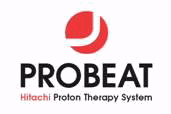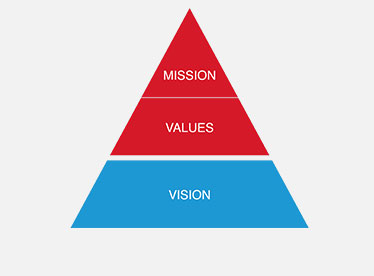-
Products
-
Transportation & Mobility Solutions
Transportation & Mobility Solutions
At Hitachi, we engineer industry-leading transportation and mobility solutions by leveraging decades of knowledge and using high-quality automotive material and components.
-
Energy Solutions
Energy Solutions
We believe the only solution for fulfilling the growing power requirements of industries and society is through a comprehensive portfolio of sustainable energy solutions and delivering innovative high-efficiency energy systems.
-
IT Infrastructure Services
IT Infrastructure Services
Hitachi’s state-of-the-art IT products and services are known to streamline business processes which result in better productivity and a higher return on investment (ROI).
-
Social Infrastructure: Industrial Products
Social Infrastructure: Industrial Products
Within the industrial sector, Hitachi is consistently delivering superior components and services, including industrial and automation solutions, useful in manufacturing facilities.
-
Healthcare & Life Sciences
Healthcare & Life Sciences
At Hitachi, we believe that healthcare innovation is crucial to a society’s advancement. A strong healthcare sector is often considered an inseparable element of a developed society.
-
Scientific Research & Laboratory Equipments
Scientific Research & Laboratory Equipments
Hitachi focuses on extensive research and development, transformative technology, and systems innovation to unfold new possibilities and create new value through scientific endeavors that strengthen the connection between science and social progress.
-
Smart Audio Visual Products
Smart Audio Visual Products
Since 1956, Hitachi audio visual products have provided state of the art solutions to consumers all over the world. It has been our pleasure to design competitive products at the lowest possible prices while maintaining our industry-leading quality standards for your comfort and enjoyment.
-
View All Products
Hitachi Products & Solutions
Hitachi, a technology leader in the U.S., offers a diverse set of products and solutions, and breakthrough technologies for smart manufacturing, green energy and mobility solutions that empower governments, businesses, and communities.
-
Transportation & Mobility Solutions
- Social Innovation Solutions
-
About Us
-
Hitachi in the U.S.A.
Hitachi in the U.S.A.
Discover information about the Hitachi group network across the Americas, upcoming events and sustainability endeavours, CSR policies, and corporate government relations.
-
About Hitachi Group
About Hitachi Group
Explore our leadership team, investor relations, environmental vision, and sustainability goals. Learn how Hitachi is leveraging its research & development capabilities for social innovation across industry verticals.
-
Hitachi in the U.S.A.
- News Releases
- Case Studies
- Careers
- R&D
HITACHI “PROBEAT” PROTON BEAM THERAPY SYSTEM NOW ONLINE TREATING PATIENTS AT THE UNIVERSITY OF TEXAS, M. D. ANDERSON CANCER CENTER

BRISBANE, Calif., June 30, 2006 - Hitachi, Ltd. (NYSE: HIT) and its subsidiary, Hitachi America, Ltd., today announced the successful startup of the company’s “Probeat” proton beam therapy system for the treatment of certain types of cancers at The University of Texas M. D. Anderson Cancer Center in Houston, Texas. Hitachi supplied the major equipment (accelerator, beam lines, gantries, nozzles and treatment couches) for the facility.
M. D. Anderson and Hitachi broke ground on the project in June 2003. The two-story Proton Therapy Center features three gantry treatment rooms, one fixed-beam treatment room, an experimental treatment area, a full range of patient and research support areas, a synchrotron and beam transport system. Gantry patient treatment rooms will have a patient treatment bed framed by a large wheel known as a gantry. The gantries, which are 35 feet in diameter and weigh approximately 200 tons - equivalent to the weight of a Boeing 757 - rotate around the patient to direct the proton beam precisely at the tumor target.
In announcing the commencement of patient treatment, James D. Cox, M.D., head of the Division of Radiation Oncology at M. D. Anderson, said “The arrival of proton therapy marks a milestone for radiation treatment at M. D. Anderson, with the precision, safety and effectiveness it brings to patients When I started in this discipline three decades ago, we had to give radiation to large fields of the body because we couldn’t determine exactly where the tumor was. Now, with the evolution of imaging techniques, we can pinpoint where the tumor is and plan the depth of the radiation to the tumor. With proton therapy, we will be able to increase doses of radiation, preserve healthy tissue and treat more patients much more successfully.”
In making the announcement, Akira Maru, vice president and executive officer and president & chief executive officer of Power Systems Group, Hitachi, Ltd., said, “We are very enthusiastic about the startup of the new proton therapy cancer treatment center at M. D. Anderson. We are honored to have brought proven Hitachi technology to this great medical center for the benefit of society, and in particular, to help in the fight against cancer. We developed the Hitachi proton beam therapy system in 1998 and the first unit has been in successful use at the University of Tsukuba, in Japan, since September 2001. Our mission at Hitachi is to be a “Best Solutions Partner,” developing products and technologies for the benefit of society. The success of this project clearly demonstrates the value of a very sophisticated technology being applied to helping one of society’s difficult challenges. We congratulate Dr. Cox and his team on their pioneering work and the successful startup of the Proton Therapy Center.”
A unique private-public partnership, the Proton Therapy Center was built through a collaboration to develop and operate the investor-owned freestanding $125 million facility. M. D. Anderson provided the facility site, valued at $2.5 million and has full clinical, research and staffing responsibilities. Other investors and partners in the project include: Hitachi, Ltd. and Hitachi America, Ltd., supplying the proton therapy technology; Sanders Morris Harris, Inc. the largest investment bank and securities firm based in the Southwest; The Styles Co., a Houston-based project development and management firm specializing in health-care facilities; the Houston Firefighters’ Relief and Retirement Fund and Houston Police Officers’ Pension System, lead financial investors in the project; General Electric Company; Varian Medical Systems; and IMPAC Medical Systems.
Hitachi is a pioneer in Proton Beam Therapy technology. Hitachi developed its own proton beam therapy system in 1998 and supplied a system to the University of Tsukuba, in Japan. Since it began trial patient treatment in September 2001, the system has quickly gained recognition for its high level of accuracy and reliability.
PROBEAT is a medical device designed to produce and deliver a proton beam for the treatment of patients with localized tumors and other conditions susceptible to treatment by radiation. PROBEAT is a proton beam irradiation system, which provides a therapeutic proton beam for clinical treatment. It is designed to deliver a proton beam with the prescribed dose and dose distribution to the prescribed patient treatment site. The equipment is comprised of two main components. One is a beam delivery system whose primary responsibility is to ensure that the prescription parameters are properly delivered. The other is the equipment necessary to generate the proton beam and direct it to the beam delivery system. For further information, please visit, http://www.mdanderson.org/care_centers/radiationonco/ptc/ or http://www.pi.hitachi.co.jp/rd-eng/product/industrial-sys/accelerator-sys/proton-therapy-sys/index.html.
A compact particle accelerator, known as a synchrotron, accelerates protons to variable energies into the beam transport line. The synchrotron contains a ring of magnets that constrains the protons so that they travel in a set path inside the high vacuum chamber. During each revolution of travel through the chamber, the protons gain an increment of energy from radiofrequency power. After many cycles, the protons reach the energy required by a specific treatment plan and are extracted from the ring into the beam transport line, which then directs the proton beam to the patient in a treatment room.
Proton beam therapy is drawing attention worldwide as a promising application for the treatment of a variety of difficult-to-treat diseases. In the United States, proton therapy is routinely covered and paid for by Medicare and other medical insurance plans. It also appears likely that it will be accepted for insurance coverage in Europe and Japan in the near future.
The Hitachi group has placed the Bio-Medical field as one of the company’s strategic business cores for the future. The business focuses on diagnostic and therapeutic systems that employ cutting-edge technologies, such as Positron Emission Tomography (PET) cancer diagnosis and proton beam cancer therapy system. The Hitachi Group is also bringing into the global market equipment and related services in applied medical biotechnology, such as intelligent operating rooms, DNA sequencers and advances in tissue engineering.






